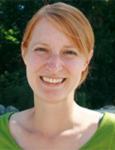An international group of researchers recently published a paper in Science warning that humanity has crossed four of nine planetary boundaries—the biophysical parameters within which human civilization has been able to survive and thrive. According to their study, humanity has altered the climate, land-systems (e.g., forests), biodiversity, and biogeochemical cycles so much that we’ve exited the “safe operating space” of these boundaries. While this doesn’t necessarily spell apocalypse, it could mean the end of the world as we know it.
My boss, the UW-Madison Center for Limnology’s Steve Carpenter, was among the study’s authors. He led the investigation of changes to a certain biogeochemical cycle with high local relevance: phosphorus, an essential nutrient whose excess has become a well-known and widespread problem for Wisconsin’s waters.
In prepping the local outreach for the study’s release, my colleague and I pondered how to deflect the doomsday narrative the study could potentially prompt. Without discounting the predicament the study presents, we were wary of the media potentially framing it as another doom-and-gloom report—a narrative that is not particularly helpful in initiating positive change, as several social scientists have pointed out. According to researchers such as Moser, Norgaard, and Feinberg and Willer, doomsday narratives can have the unintended effect of avoidance or denial of a given problem.
This situation echoed a running discussion thread from my involvement with Waters of Wisconsin—that is, the need for new narratives around water in Wisconsin. In particular, the Wisconsin Academy’s new Communications Toolkit states the need for stories that “capture our imagination, and engage our actions in positive ways.” One strategy it promotes is solutions-oriented messages and stories.
But what do such stories look like? I’d like to offer two frameworks with which I think are worthy of experimenting.

The first is a forward-looking approach that involves imagining the possibilities for what kind of future we want to create. Through the creation of scenarios—fictitious but plausible stories about a range of possible futures—scientists, decision-makers, and the average Joe can push the boundaries of their imaginations and engage in discussions about what is desirable for the future and what we can do today to make those desirables happen.
A local example of scenarios is Yahara 2070, a set of stories about possible futures for the Yahara Watershed (the area that encompasses Madison and the Yahara lake chain). Yahara 2070 portrays four distinct pathways toward the year 2070 and the resulting conditions for the well-being of future generations. As the writer of Yahara 2070, I perceive its storytelling method as solutions-oriented because the project explores the long-term implications and tradeoffs of a variety of solutions to present-day water issues.
This leads to the second framework, which focuses less on what we want to shoot for and more on what is already happening. Another international team of scholars is doing just that with their project “Bright Spots: Seeds of a Good Anthropocene.” They are trying to identify positive things about humanity that, if we were to carry these “assets” with us into the future, would make for a positive existence within the Anthropocene—what some scholars call the new geological epoch that planetary-boundary-altering human activity has brought about. The team’s hope is that a bright future will seem less far-fetched if we tell stories about the good things of which humans are capable.
Ultimately, for the planetary boundaries study, our attempt to deflect doomsday resulted in highlighting Carpenter’s call to fix the “distribution problem” of phosphorus and nitrogen—the fact that some places, such as Wisconsin, have too much of these nutrients and other places, like parts of Africa, don’t have enough. Hopefully this solutions-oriented frame can help to build both the future-looking and asset-accentuating thinking needed to bring us back from the edge.




